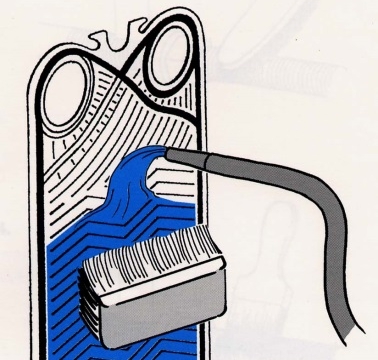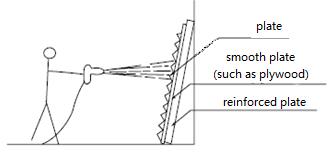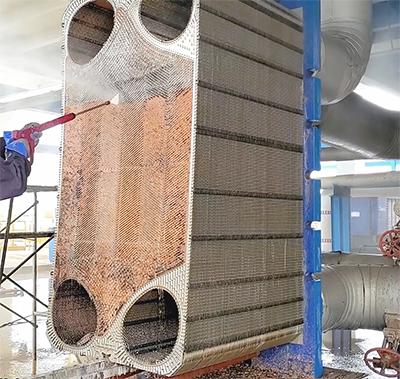Step-by-Step Cleaning Process for Plate Heat Exchangers
Plate heat exchangers(PHEs) are vital components in various industrial processes, facilitating efficient heat transfer between fluids. Over time, these systems can accumulate fouling—such as mineral scaling, biological growth, and particulate matter—that impairs performance. Regular cleaning is essential to maintain optimal functionality and extend the lifespan of the equipment.
For a visual guide on how to clean plate heat exchanger and maintaining plate heat exchangers, consider watching the following video:
Mechanical Cleaning
Mechanical cleaning involves the physical removal of deposits from the corrugated plates of the heat exchanger. This method is particularly effective for addressing stubborn fouling that resists chemical treatment.
Proceure:
1. Open the cleaning unit and carefully remove the corrugated plates.
2. Use a soft-bristled brush to gently scrub the plates, avoiding any abrasive materials that could damage the surface.


3. Clean the plates with a high-pressure water gun, ensuring that the pressure does not exceed 8 MPa.
4. Maintain a minimum distance of 200 mm between the nozzle and the plate surface to prevent deformation.
5. Support the backside of the plate with a rigid or reinforced plate during high-pressure cleaning to avoid bending.

Precautions:
EPDM phe gaskets should not be contacted to aromatic solvents for more than 30 minutes.
Avoid direct contact between the backside of the plate and the ground during cleaning.
After cleaning, inspect the plates and gaskets thoroughly to ensure no residues, such as solid particles or fibers, remain.
Replace any peeled-off or damaged gaskets.
Do not use metal brushes, as they can scratch the plates and gaskets.
Ensure proper collection of wastewater to prevent contamination of the site and other equipment.
Chemical Cleaning
Chemical cleaning involves circulating a cleaning solution through the gasket type heat exchanger to dissolve and remove deposits. This method is effective for eliminating mineral scales and organic fouling without disassembling the unit.
Procedure:
1. Prepare a cleaning solution with a mass concentration of ≤4% for either an alkaline or acidic agent, depending on the nature of the fouling.
2. Heat the cleaning solution to a temperature between 40–60°C.
3. Connect the equipment to a mechanical cleaning vehicle, ensuring that a pipe is installed at the media inlet and outlet pipelines.
4. Pump the cleaning solution into the equipment in the opposite direction of the usual product flow.
5. Circulate the cleaning solution for 10–15 minutes at a media flow rate of 0.1–0.15 m/s.
6. Finally, re-circulate clean water for 5–10 minutes to flush out any remaining cleaning agents.
Precautions:
Ensure that spare connections are available before assembly to allow smooth drainage of the cleaning fluid.
Use clean water with a chloride content of less than 25 ppm for flushing the heat exchanger.
Select special cleaning agents based on the specific type of dirt present.
Mechanical and chemical cleaning methods can be used in combination for more effective results.
Do not use hydrochloric acid to clean stainless steel plates.
Avoid using water with more than 25 ppm chloride content for preparing cleaning fluids or flushing stainless steel plates.
Inspecting and Reassembling the Heat Exchanger
After cleaning, a meticulous inspection and precise reassembly of the plate heat exchanger are crucial to ensure optimal performance and longevity.
Inspection:
Inspect each plate for residual fouling, corrosion, or physical damage. Even minor imperfections can compromise heat transfer efficiency and lead to leaks.
For gasketed plate heat exchanger Check gaskets for signs of wear, such as cracks, deformation, or loss of elasticity. Replace any gaskets that show deterioration to maintain a reliable seal.
Reassembly:
Ensure that plates are reassembled in the correct sequence and orientation. Misalignment can disrupt flow patterns and reduce efficiency.
Carefully position gaskets to align with their designated grooves, ensuring a uniform seal across all plates.
Gradually tighten the frame bolts in a crisscross pattern to evenly distribute pressure and prevent plate distortion. Refer to the manufacturer's specifications for the correct tightening torque.
Post-Cleaning Testing and Maintenance
Once the welded heat exchanger is reassembled, conducting thorough testing and establishing a maintenance routine are essential steps to ensure sustained performance.
Pressure Testing:
Perform a hydrostatic pressure test to verify the integrity of the seals and detect any leaks. This involves filling the unit with water and pressurizing it to the specified level while monitoring for pressure drops or visible leaks.
Maintenance Schedule:
Develop a regular maintenance schedule based on operational demands and environmental conditions. Routine inspections and cleanings help prevent excessive fouling and identify potential problems early.
Document all maintenance activities, including cleaning dates, inspection findings, and any corrective actions taken. This record-keeping facilitates trend analysis and informed decision-making for future maintenance planning.
Shanghai Heat Transfer Equipment Co., Ltd. specializes in the design, manufacturing, installation, and service of plate heat exchangers and complete heat transfer systems.
If you need further consultation and discussion, please feel free to contact us.
Email: info@shphe.com
WhatsApp /Cell: +86 15201818405




